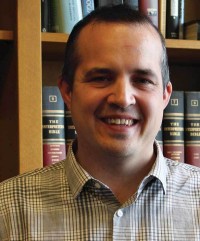A parallel world of preaching stars?
It's great that Mark Oppenheimer wrote about the Festival of Homiletics for the New York Times recently.
It's a little odd that he never really follows up on his lead—the fact that far more Americans have heard of Joel Osteen and T. D. Jakes than Barbara Brown Taylor and Will Willimon.
Oppenheimer presents mainline preaching as a "parallel world of preaching stars" to its evangelical counterpart, and he gives a useful introduction to some basic divides both theological and methodological (narrative preaching gets a shout-out). But he never really addresses the question of why evangelical preachers become household names while mainliner fame remains a good bit nichier. Yes, the evangelical world is bigger, but not massively so. There are also crucial differences in the nature of church leadership.
And these differences are cultural as well as structural: we mainliners tend to be pretty suspicious of celebrity leadership. My colleague David Heim calls this a "healthy thing" about the mainline world; Century columnist Carol Howard Merritt makes a more pragmatic case that mainliners need to "get over our aversion to celebrities."
In any event, it's not simply that "a parallel world of preaching stars" exists and, by some fluke, most Americans haven't heard of them. There are some very real reasons that mainliner fame has its limits. Oppenheimer does get a quote from a pastor who says she's "a little star-struck" to hear Taylor and Walter Brueggemann preach. But no doubt there are lots of Festival of Homiletics attendees who, for better or for worse, would never use that kind of language to talk about our world's relatively big names.




